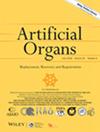Consumer views of functional electrical stimulation and robotic exoskeleton in SCI rehabilitation: A mini review
Abstract
Background
Functional electrical stimulation (FES) and robotic exoskeletons represent emerging technologies with significant potential for restoring critical physical functions such as standing and walking—functions that are most susceptible after spinal cord injury (SCI). However, the further development and successful integration of these technologies into clinical practice and daily life require a deep understanding of consumer perspectives.
Objective
This review synthesizes consumer perspectives from a diverse range of technology stakeholders, including medical service providers, researchers, and persons affected by SCI—those living with SCI and their caregivers. By capturing this diverse range of perspectives, the review aims to describe the real-world implications, challenges, and expectations associated with FES and robotic exoskeleton technologies.
Methods
Relevant literature was primarily identified through a search in EBSCO, SCOPUS, and Web of Science. The authors supplemented the search by reviewing reference lists including appropriate articles identified by the authors. The PICO question guiding this process was defined as P (persons with SCI and caregivers, researchers, clinicians, and developers), I (use of FES or robotic exoskeletons), C (technology users compared to non-users), and O (stakeholder perspectives and experiences). Each identified article underwent a thorough appraisal, after which findings were summarized to present consumers' viewpoints on FES and robotic exoskeleton technologies.
Results
The review focuses on key areas such as perceived benefits, limitations, implementation barriers, and consumer expectations. The benefits identified are multifaceted, extending from physical improvements, such as enhanced mobility and muscle strength, to psychological gains including increased confidence and sense of independence. However, these technologies also face perceived limitations, often related to accessibility, cost, and usability challenges. Beyond technical issues, implementation barriers are related to factors like insurance coverage and the need for specialized training for both users and providers. Consumer expectations include hope for technological advancements, increased accessibility and affordability, and a desire for more personalized and adaptable solutions tailored to the unique needs of individuals with SCI.
Conclusion
This comprehensive overview of consumer perspectives offers insights into the needs and preferences of the end-users, which are essential for creating user-centric technology and effectively translating research findings into clinical practice.


 求助内容:
求助内容: 应助结果提醒方式:
应助结果提醒方式:


